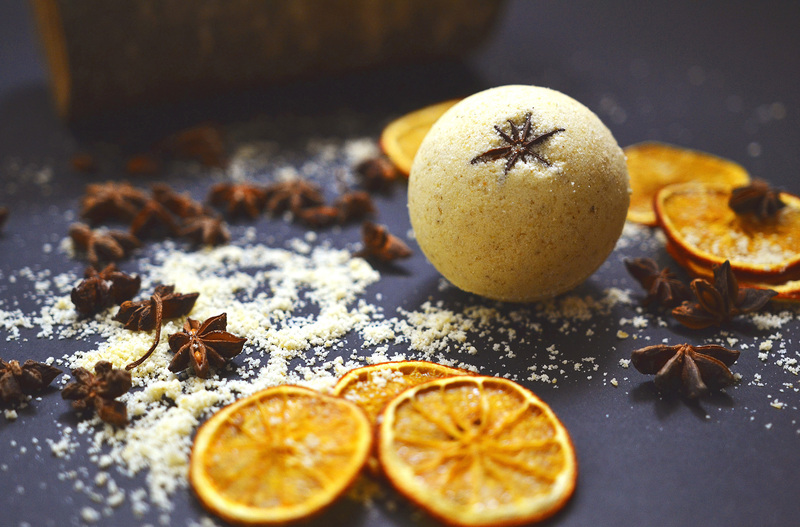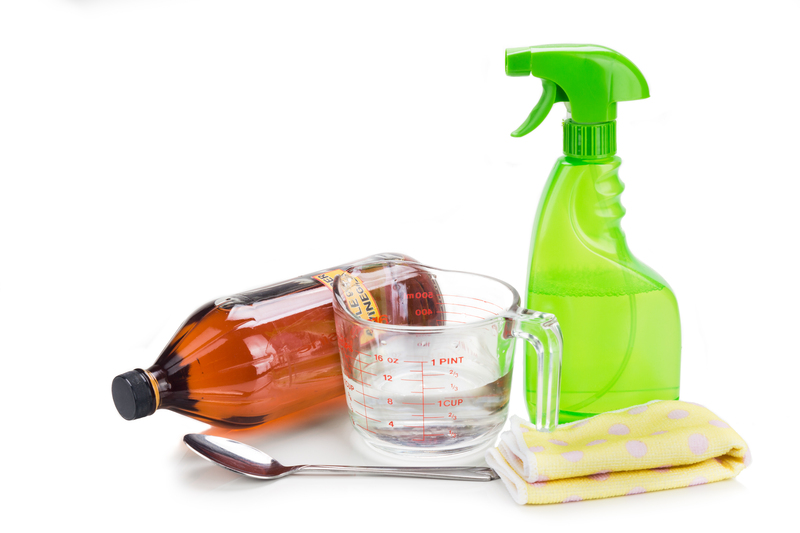Proven Methods to Clean Mould from Window Sills
Posted on 30/05/2025
Proven Methods to Clean Mould from Window Sills
Mould on window sills is a common household problem, especially in areas with high humidity or poor ventilation. Not only is it unsightly, but it can also pose health risks, particularly for individuals with allergies or respiratory issues. Fortunately, cleaning mould from window sills is manageable if you use the right methods and materials. In this comprehensive guide, you'll discover proven techniques to remove mould from window frames and sills efficiently and safely.


Table of Contents
- Why Remove Mould from Window Sills?
- Essential Preparation Before Cleaning Mould
- Using Store-Bought Mould Cleaners
- Natural Household Remedies for Cleaning Mould
- Step-by-Step Guide: How to Clean Mould from Window Sills
- Tips to Prevent Mould from Returning
- When to Call a Professional for Window Mould Removal
- Frequently Asked Questions About Cleaning Mould from Window Sills
Why Remove Mould from Window Sills?
Understanding the Health and Structural Risks
Mould thrives in damp, poorly ventilated spaces, making window frames and sills prime real estate. While a small patch of mould may seem harmless, prolonged exposure to mould spores can lead to a range of health problems, such as:
- Allergic reactions (sneezing, watery eyes, skin rashes)
- Respiratory issues (wheezing, asthma exacerbations)
- Worsening symptoms for people living with asthma or COPD
Essential Preparation Before Cleaning Mould
Stay Safe and Gather the Right Supplies
Safety always comes first when you tackle mould removal from window sills or frames. Before cleaning, ensure you:
- Open windows for proper ventilation
- Wear protective gloves, a mask, and safety goggles
- Keep children and pets away from the area
Tools and materials you'll need:
- A bucket
- Soft brush or sponge
- Clean cloths
- Spray bottle
- Mild detergent, white vinegar, or commercial mould remover
- Old toothbrush for corners and tight spots
Preparation is the key to effectively eliminating mould on your window sills and ensuring it doesn't spread to other areas.
Using Store-Bought Mould Cleaners
Efficient Solutions for Stubborn Mould Growth
Commercial cleaning products designed for mould removal are readily available and can be highly effective, particularly for persistent or widespread infestations. When using a store-bought mould remover on your window frames, always follow the manufacturer's instructions. Key points to keep in mind:
- Read the label to ensure it is suitable for your window sill material (wood, plastic, aluminium, etc.)
- Test a small, inconspicuous area first to check for any adverse effects
- Allow the product to soak for the recommended time for optimal results
Some of the most effective commercial mould removers contain ingredients like hydrogen peroxide, bleach, or quaternary ammonium compounds. These can kill mould spores and disinfect the surface, but proper ventilation is essential because of strong fumes.
Natural Household Remedies for Cleaning Mould
Eco-Friendly Alternatives for Mould Removal from Window Sills
If you prefer a more natural approach, household staples like vinegar, baking soda, and hydrogen peroxide can be surprisingly effective at cleaning mould off window sills.
- White Vinegar - Pour undiluted white vinegar into a spray bottle, spray onto the affected area, let it sit for at least one hour, then scrub and wipe clean. Vinegar kills up to 82% of mould species and deodorizes the area.
- Baking Soda - Mix a teaspoon of baking soda with two cups of water in a spray bottle. Spray, scrub gently, and wipe clean. Baking soda deodorizes and absorbs moisture, preventing further growth.
- Hydrogen Peroxide - Apply 3% hydrogen peroxide to the mould on the window sill. Allow it to bubble for 10 minutes before scrubbing and wiping down the surface.
- Lemon Juice - The natural acidity helps to clean small mould spots and leaves a fresh scent.
*Note:* Do not mix vinegar and hydrogen peroxide together as this can create toxic fumes.
Step-by-Step Guide: How to Clean Mould from Window Sills
Follow these proven steps for a thorough and lasting clean
-
Remove Excess Moisture
Start by wiping away any condensation or standing water with a dry cloth. Mould thrives in moist environments, so it's essential to reduce dampness first. -
Vacuum Loose Spores (Optional)
If the area is dry, use a vacuum with a HEPA filter to gently remove loose mould spores. Empty the vacuum outside immediately to avoid recirculating spores. -
Apply Your Cleaning Solution
Spray your chosen cleaning solution (commercial or household remedy) generously on the affected sections of the window frame or sill. -
Allow Time to Soak
Let the solution sit for at least 10-30 minutes. This allows it to penetrate, kill the mould, and loosen stains. -
Scrub the Surface
Use a soft brush, sponge, or old toothbrush to gently scrub away the remaining mould. Avoid using abrasive scouring pads (especially on painted or wooden sills) which could damage the surface. -
Wipe and Rinse
Wipe away mould residue and cleaning solution with a clean, damp cloth. For heavily affected areas, you may need to repeat the process. -
Dry Thoroughly
Make sure the window sill and surrounding area are completely dry. Use a towel, open the window, or position a fan to speed up drying. -
Dispose of Cleaning Materials Safely
Place gloves, cloths, and any contaminated materials inside a sealed bag before disposing. Wash your hands thoroughly after cleaning.
Important: Never paint over mould or seal it in. The mould will continue to grow under paint or caulk, leading to further issues.
Tips to Prevent Mould from Returning to Your Window Sills
How to Keep Your Windows Mould-Free in the Future
Cleaning is just one part of the battle; preventing mould recurrence on window sills is crucial for a healthy living environment.
- Wipe down window frames and sills regularly, especially in humid seasons.
- Use dehumidifiers in rooms prone to condensation (like bathrooms and kitchens).
- Ensure proper ventilation by opening windows and using extractor fans.
- Check for leaks or poor insulation around windows and repair promptly.
- Consider using moisture-absorbing crystals or silica gel packs on window sills.
- Paint wooden sills with mould-resistant paint for added protection.
*Tip: Monitoring humidity levels in your home can make a big difference in preventing mould growth on window frames and sills.
When to Call a Professional for Window Mould Removal
Knowing Your Limitations Can Save Time and Protect Your Home
While most household cases of mould on window sills can be handled with DIY methods, there are situations where professional remediation is necessary, including:
- The mould covers a large area (more than one square meter)
- You suspect mould has penetrated into walls or hidden cavities
- Persistent musty odours despite cleaning
- Household members experience ongoing health problems related to mould
Professionals use specialized tools and cleaning agents to ensure complete removal and prevent cross-contamination. If you're unsure, it's always better to err on the side of caution.
Frequently Asked Questions About Cleaning Mould from Window Sills
-
Can I use bleach to clean mould from window sills?
While bleach can kill mould on non-porous surfaces, it may not be effective for porous materials like wood and can sometimes exacerbate damage or cause stains. Vinegar or hydrogen peroxide are generally safer and equally effective alternatives. -
Is mould on window sills dangerous?
Mould can cause health problems even in small amounts, especially for sensitive individuals. It's important to address mould growth promptly. -
How often should I check my window sills for mould?
Perform a quick check at least once a month and after periods of sustained damp weather or temperature fluctuations. -
What causes mould to grow on window sills?
Mould is typically caused by excess moisture, poor ventilation, and temperature differences that cause condensation around windows. -
What's the best way to prevent black mould on window sills?
Keep surfaces dry, ventilate regularly, use a dehumidifier, and repair leaks. Painting surfaces with anti-mould paint can also help.
Conclusion: Restore and Protect Your Home with Proven Methods
Cleaning mould from window sills is not only about aesthetics but is also vital for the health and safety of your household. By using the proven mould removal methods detailed in this guide--from natural remedies such as vinegar or baking soda, to commercial cleaning products--you can quickly and safely restore your window frames and keep your living space fresh.
Don't forget the importance of regular maintenance and prevention techniques to stop mould from returning. In cases of severe or persistent mould, don't hesitate to seek professional help.
For more expert cleaning advice and healthy home tips, bookmark this guide and revisit it anytime mould becomes an unwelcome guest on your window sills!




